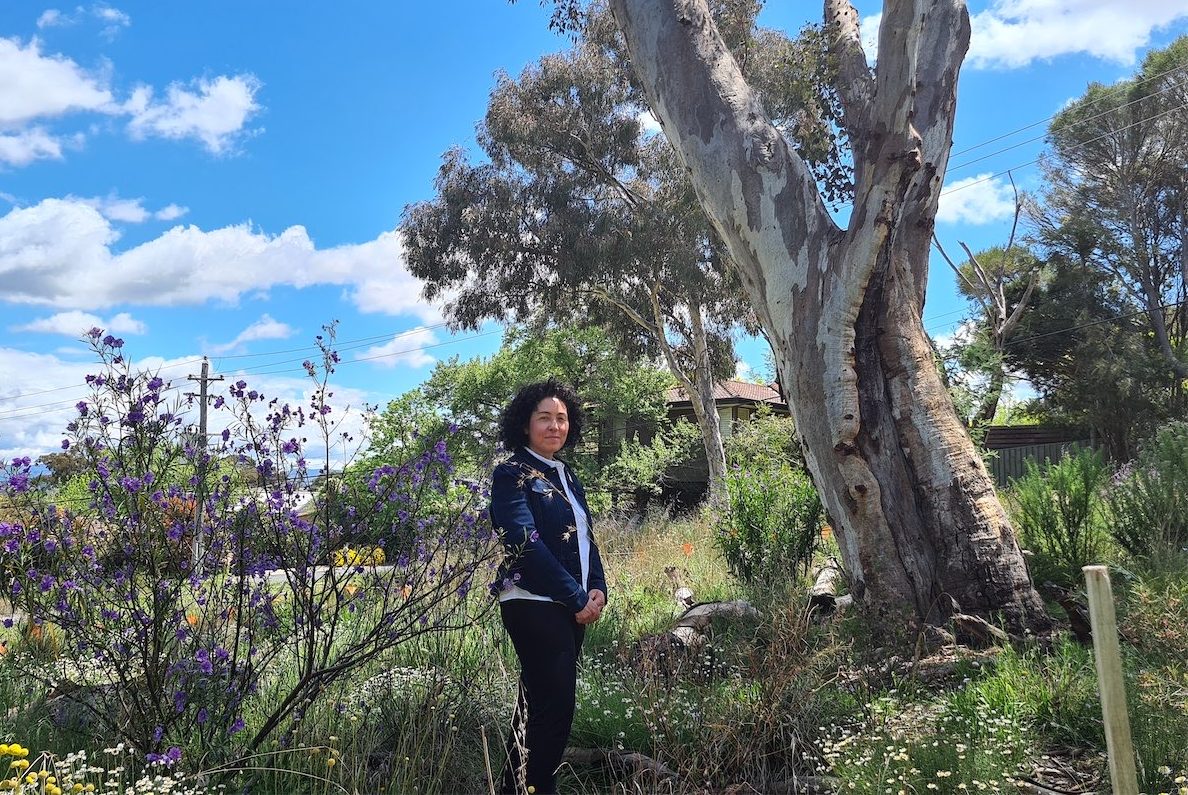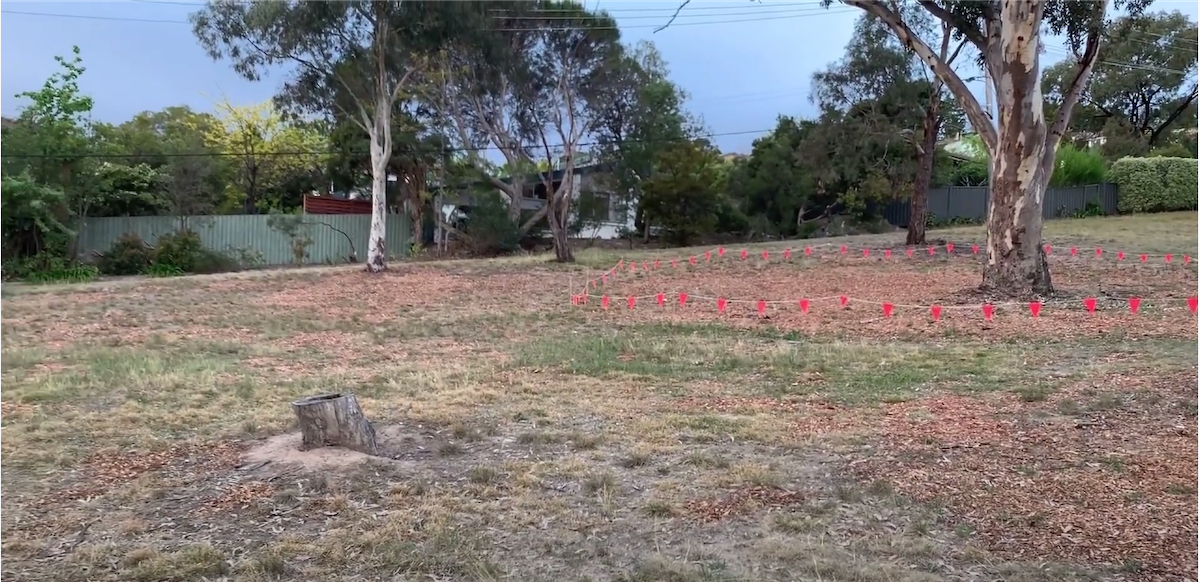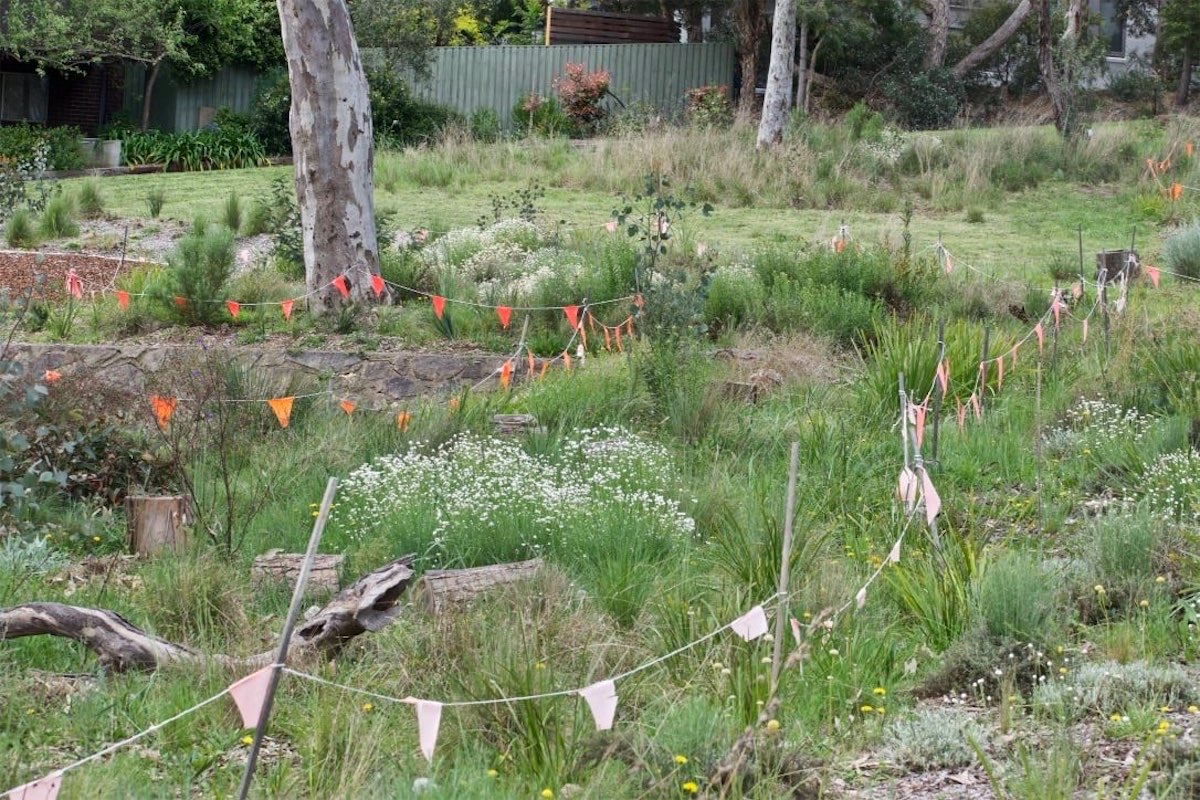
A HEALTHY, native woodland meadow has been restored in Canberra’s suburbs, thanks to the work of a small group of neighbours in Weston.
Committed to protecting their unique local environment, the neighbours have dedicated two years to restoring a local park’s natural biodiversity, and they’re not finished yet.
Alice Hathorn, the group convenor, says: “I looked out the kitchen window a couple of years ago and I just noticed that there was a particular grass that all looked the same and it was spreading through the park.

“I remember speaking to my partner one night and I said to him: ‘We’re going to restore this thing and show people, before we lose it all’ and that’s kind of how it all started.”
The neighbourhood team has rescued the Fowles Street pocket park from serious invasive weeds such as African Lovegrass and Chilean Needle Grass.
“When we started here it was dead,” says Alice.
“Some weeds will partially coexist with the local plant community, but weeds like African Lovegrass, they’re quite extreme, they just create these monocultures and so that was part of what drove the project.”
Alice drew upon scientific research and consulted leading academics to create the “woodland and meadow method”.
“My background is in social sciences and law, it has nothing to do with science, certainly not ecology so it was pretty foreign to me,” she says.
The “woodland and meadow method” consists of simple organic and evidence-based strategies to manage weeds, encourage natural revegetation, repair soils and slow water flows.
“It’s a beautiful system,” says Alice.
Alice didn’t know many of her neighbours when the project began, she says she just knocked on doors in the area and asked for people to give up their weekends to help save the park.
“Honestly, they’ve been so incredible and they are hugely enthusiastic; and then more and more people came. Now people just drop in when they’ve got a bit of time,” she says.

The goal for Alice and her team is to restore enough ecosystem function that the park becomes self-sustaining. The project has been running for two years and Alice believes that when it reaches five years it will become entirely self-sufficient.
“Part of what’s driving this project is to bring it to people’s attention, it’s what we do every day that matters,” she says.
Alice believes that between 2009 and 2016, Canberra lost so many mature, hollow-bearing trees that it will take more than 200 years to repair the damage.
The yellow box and red gum trees at Weston Park are aged between 200 and 300 years, but the hollows within them can take 180 to 200 years to form.
“That’s why you see timber lying around here, it provides habitat,” she says.
“It’s incredibly important for habitat, but this is a natural cycle that evolved to replenish itself so episodically when branches fall to the ground, they are designed to provide habitat and then when they’re done doing that they break down over time and the carbon goes back into the soil.”
Alice says that Canberra’s wildlife is proportionately dependent on those trees and that there are chains of relationships between insects, plants and birds.
However, when those relationships are interrupted, she says the populations of native birds, mammals and marsupials begin to decline.
“Thirty per cent of endangered species are dependent on the urban forest so it’s really important that we restore the original plant communities,” says Alice.
“We measure the health of this environment based on the insect life and the bird life and we’ve had over 40 species of local birds recorded coming to visit this park,” she says.
“We’ve had over nine species of native butterflies return since the project started, just in this short time and we’re anticipating more.”
Alice and her team at ACT Urban Woodland Rescue are now paving the way for similar projects in Canberra, encouraging other communities to do the same in their local areas.
“I’ve now been contacted by a number of people who want to do exactly that, we didn’t do a lot of advertising for this project. I wasn’t going to ask people to do something until I was confident it worked,” she says.
“Anyone can be part of a small restoration and return local biodiversity with the ‘woodland and meadows method’. It’s natural and it works.”
More at facebook.com/acturbanwoodlandrescue

Who can be trusted?
In a world of spin and confusion, there’s never been a more important time to support independent journalism in Canberra.
If you trust our work online and want to enforce the power of independent voices, I invite you to make a small contribution.
Every dollar of support is invested back into our journalism to help keep citynews.com.au strong and free.
Thank you,
Ian Meikle, editor





Leave a Reply